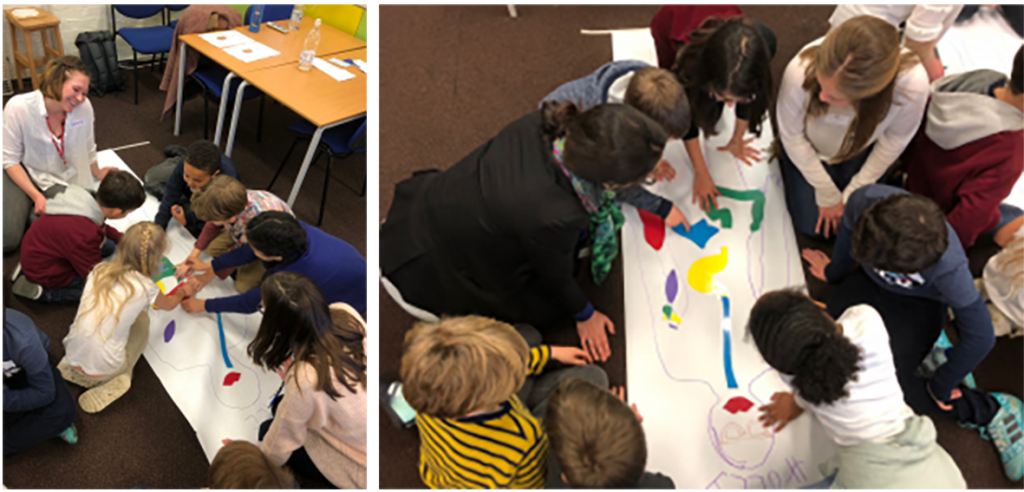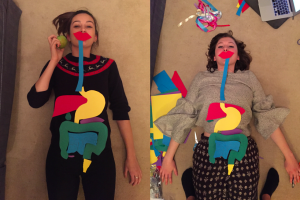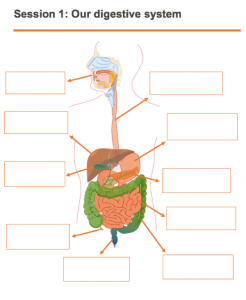The big day finally arrived and Grace and I were armed with fancy thinking hats and sparkle. We arrived 30 minutes before the session to get set up, i.e. load the quiz and divvy out the organs. At the last minute (and to save time) we decided to draw around ourselves for the pin the organ on the body game… I’m not sure we anticipated looking quite like crime-scene bodies but at least we could distinguish between our outlines with the addition of my glasses!

At 3.30 pm the children arrived and we were off! Each child was given a lab book, something they could take away with them at the end of our 5 weeks together. The children were quite puzzled by the organs on the tables and really loved the lab books. After introducing ourselves and letting the children introduce themselves, we asked them to come up with team names and to bring their laminated organs down to the floor. Getting down on the floor with the children to complete the pin the organ game turned out to be a really good ice-breaker and provided us with a lot of entertainment. One girl was convinced the appendix was a little eyebrow (complete with demonstration!), and other members of the group thought the liver was the heart or a lung. Unsurprisingly the mouth was the only correctly placed organ! In hindsight, we should have shown the children a picture of a correctly labelled diagram demonstrating how the gastrointestinal system fits in the human body before asking them to figure out where the laminated organs were supposed to go! We definitely threw them in at the deep end, although they still managed to do a great job!

After showing the children where the organs went we tested their knowledge on digestion, microbes, bile and metabolism. The term microbes threw them a little. We asked them how many microbes they thought lived inside us: one boy thought there was only one! The expression on their faces when we told them there were millions was priceless! After giving the children a little bit of background knowledge, we started the ‘Big Science Club Quiz’. The children were great at passing along our jazzy ‘thinking hats’ so that a different child from each team was wearing it for each quiz question. The child wearing the ‘thinking hat’ became the team leader, and had to communicate with other team members, shout out the answer on behalf of their team and then stand in front of the class and read our ‘fun fact’ if their answer was correct. This meant that every child, particularly those who were sometimes overpowered by louder, more confident class members, could get involved and had their chance to speak and be listened to. It was lovely to see the children get so passionately involved and I think the friendly competition between them sparked even more enthusiasm.

With all the shouting, excitement and laughter the hour session went a lot quicker than anticipated. We were initially worried about timings but soon realised that sometimes you can’t do everything and that’s okay. As Niamh put it so eloquently in a thank you email: “… the MOST important thing is that everyone is having fun (you and the children), where there is fun and laughter, there is learning.” We certainly had a lot of fun and learnt a lot, and have plenty to think about for the next outing of the science club.



